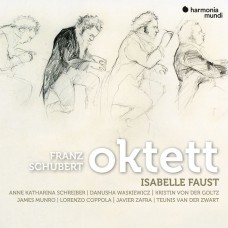您的購物車沒有添加專輯!
搜尋
舒伯特: 八重奏 作品 D.803 伊莎蓓兒·佛斯特 小提琴 / Isabelle Faust / Schubert: Octet D.803
專輯編號: HMM902263
專輯類型: 單CD
發行年份: 2018
國際條碼: 3149020226322
音樂家:
庫存狀態: 有庫存
|
A mysterious beauty
|
編號 |
曲目 |
長度 |
作詞 |
作曲 |
演奏 |
樂團 |
演唱 |
指揮 |
試聽 |
|---|



